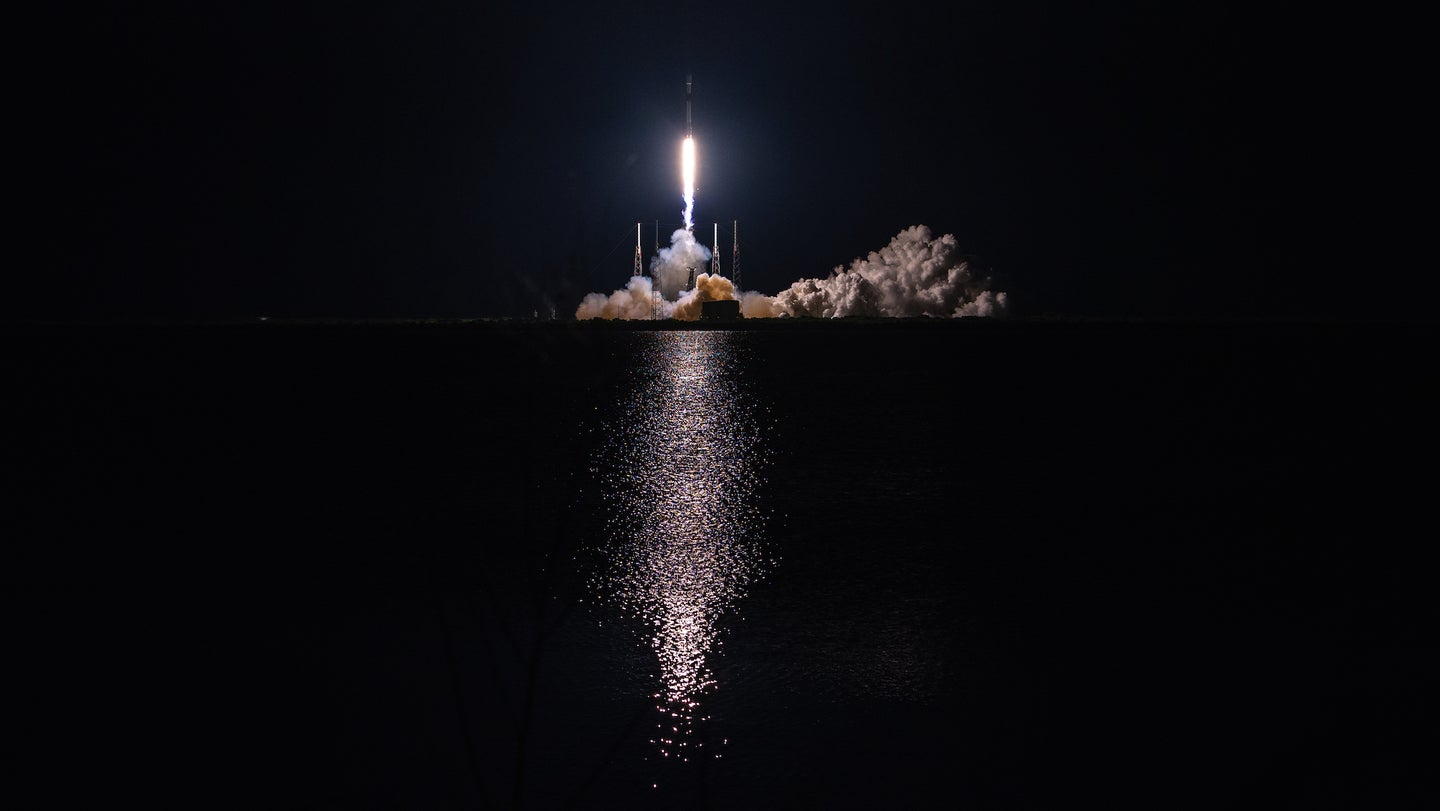
In the fall of last year, DARPA announced that it was looking for new ways to keep satellites operating in the lower edges of space. The Defense Advanced Research Projects Agency exists to explore blue-sky technologies, and create innovations that make new tools possible. Project Daedalus, announced in October, is a way to manage satellites beyond the blue sky of Earth, but not much further. The program solicitation is a fascinating portrait of the technology challenges DARPA wants to tackle to expand what can be done in orbit.
DARPA defined Very Low Earth Orbit (VLEO) as orbits less than 450 km, or roughly 280 miles, in altitude. Low Earth Orbit, by contrast, is 2,000 km or 1,200 miles. The benefits of being in Very Low Earth Orbit include, according to DARPA, “improved spatial resolution for optical imaging, higher signal-to-noise ratios for radar and lidar systems, improved geospatial position accuracy.” These all let cameras and other sensors on the satellite better observe activity on Earth below, and communicate those observations more quickly and accurately.
In addition, DARPA suggests that it’s cheaper and easier to put a satellite into VLEO, noting “greater launch vehicle insertion capability, and mass, volume, and cost savings.” Even more importantly than all of that, because VLEO is so close to Earth and so far from other satellites, the low satellites can get away with less radiation protection, and are generally out of the path of most orbital debris.
The announcement also notes that “compliance burdens with Interagency Space Debris Coordination Committee guidelines are reduced compared to higher orbit,” likely in part because the very low orbit keeps the satellites generally out of the more heavily trafficked orbital lanes.
Debris in war and peace
Orbital debris is a compounding problem for satellites and especially satellites used by the military. While space is vast, orbit is not, and the useful slices of orbits are increasingly populated by human-made objects.
Some of these objects are purely scientific, oriented out towards the stars beyond, while many are built to serve terrestrial ends. Communications satellites, surveillance satellites, and even observation satellites used for documenting weather below are all potential targets should a shooting war break out into space. Anti-satellite missiles, demonstrated by nations like the United States, Russia, China, and India, prove the capability is widespread.
Destroying a satellite with a missile creates debris, from the remains of the missile to the wreck of the satellite, and this debris persists in orbit. In November 2021, Russia destroyed its own Kosmos satellite, scattering debris throughout orbit, some of which continues to persist.
Even without the threat of destruction in war, when existing debris collides with satellites, it can create new debris, further imperiling all objects in orbit. The risk of these collisions increases with every new object put into orbit, because debris can travel into multiple directions from a collision, it can imperil satellites at further and closer orbits, too.
Flying close to the thermosphere
Orbital space has friction, especially the closer a satellite is to the atmosphere. Satellites in Low Earth Orbit experience atmospheric drag, as the gaseous particles bound to Earth’s atmosphere expand and contract in cycle with the sun. This in turn can increase the friction on a satellite, which will require either orbital correction by onboard engines or an orbit degrading until the satellite re-enters the atmosphere proper. The thermosphere, or the area starting about 90 km (56 miles) in altitude, extends “to between 500 and 1,000 km (311 to 621 miles) above our planet,” a range that fluctuates.
All of Very Low Earth Orbit is within the thermosphere. That makes the challenges of keeping a satellite in Very Low Earth Orbit unique, and suggests why DARPA might devote a program to mastering those challenges. These challenges include atmospheric and aerodynamic drag, space weather, charging the spacecraft’s batteries despite being lower than low orbit, and even atomic oxygen erosion, or the phenomena by which the O2 common lower in the atmosphere is replaced by single-atom oxygen in the thermosphere. Atomic oxygen can break chemical bonds, a problem for satellites made, as they are, out of chemical compounds.
In Daedelus, DARPA set out to demonstrate new technology that could enable sustained long-term Very Low Earth Orbit operations, despite these unique hazards. Should such a program succeed, it could allow for a new layer of satellite infrastructure, pointing narrowly targeted sensors down at the world below.
The Daedalus program itself is classified, with solicitations noting that contractors need to have security clearances for facilities and secret clearances for personnel working on the project. The program borrows its name from the Greek myth of Icarus, who flew too close to the sun on waxen wings and thus perished in uncontrolled descent. Icarus’ more cautious father, Daedalus, flew lower, and survived.
The post DARPA wants to push the boundaries of where satellites can fly appeared first on Popular Science.
Articles may contain affiliate links which enable us to share in the revenue of any purchases made.
from Popular Science https://ift.tt/WqmV3Gu




0 Comments